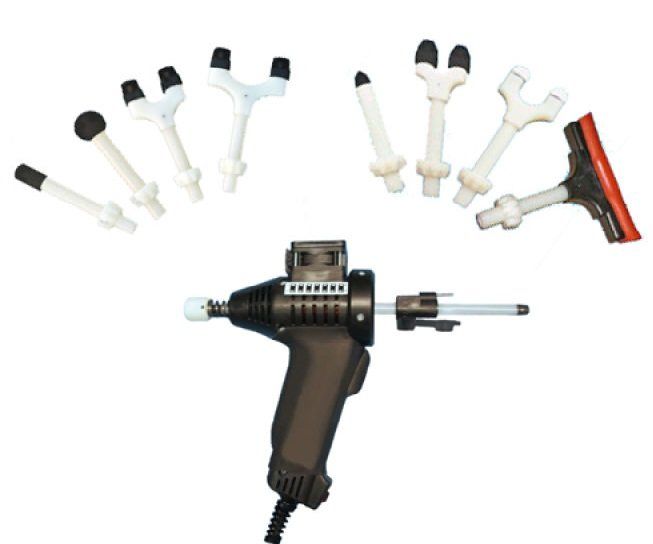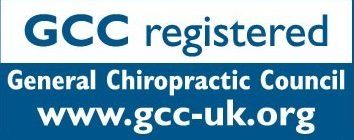Koren Specific Technique
Koren Specific Technique, or KST for short, is a relatively new style of chiropractic, although some of the components have been around for more than seventy years. In 2003 Tedd Koren, an American chiropractor, put the final touches to the technique he had been developing and started teaching it in 2005.
What chiropractors do
All chiropractors, of what ever persuasion, do three things.
- They detect subluxations, the misalignments which compromise the nervous system.
- They determine their listings, which means they decide how the subluxations need to be corrected.
- They adjust the subluxations.
Detecting Subluxations
There is a phenomenon in neurology know as an ideo-motor response. What this means is that the motor nerve will respond to an idea of an action as though it was the action itself. Motor nerves carry information from the brain to the tissues etc. So for example if you think about lifting up your arm all the motor neurons needed to do that will fire, whether you actually lift your arm up or not. This is one of the reasons why sports people and athletes can improve their performance by visualising their actions in advance.
Now when a subluxation happens the body has in-built mechanisms to correct them. When the body can't correct them for some reason it doesn't mean it stops trying. The muscles will continue to try to do what they are supposed to do and so initiate an ideo-motor response.
If we can work out how to detect the ideo-motor response we can effectively detect the subluxation. You're probably already ahead of me here. KST uses a binary bio-indicator to detect the ideo-motor response.
There is a phenomenon in neurology know as an ideo-motor response. What this means is that the motor nerve will respond to an idea of an action as though it was the action itself. Motor nerves carry information from the brain to the tissues etc. So for example if you think about lifting up your arm all the motor neurons needed to do that will fire, whether you actually lift your arm up or not. This is one of the reasons why sports people and athletes can improve their performance by visualising their actions in advance.
Now when a subluxation happens the body has in-built mechanisms to correct them. When the body can't correct them for some reason it doesn't mean it stops trying. The muscles will continue to try to do what they are supposed to do and so initiate an ideo-motor response.
If we can work out how to detect the ideo-motor response we can effectively detect the subluxation. You're probably already ahead of me here. KST uses a binary bio-indicator to detect the ideo-motor response.
What the heck is a binary bio-indicator when it's at home?
A binary bio-indicator is a reaction in a body part that either happens or doesn't happen (hence the binary); a yes or a no. There are surprisingly many of these in the body. You may have heard about kinesiology or muscle testing. This is a bio-indicator using relevant changes in muscle strength to give the yes or no answer.
The bio indicator chosen for KST is the occiput, the bone at the back of the skull. The occiput is intimately linked to the central nervous system and so is particularly useful for detecting ideo-motor responses in the motor nerves.
A binary bio-indicator is a reaction in a body part that either happens or doesn't happen (hence the binary); a yes or a no. There are surprisingly many of these in the body. You may have heard about kinesiology or muscle testing. This is a bio-indicator using relevant changes in muscle strength to give the yes or no answer.
The bio indicator chosen for KST is the occiput, the bone at the back of the skull. The occiput is intimately linked to the central nervous system and so is particularly useful for detecting ideo-motor responses in the motor nerves.
The Occipital Drop
In the presence of an ideo-motor response, one side of the occiput will appear to distort very slightly with respect to the other side. Once you have learnt to feel for it, it feels like one side has dropped down towards your feet slightly with respect to the other side, which is why it is called the Occipital Drop, or OD for short.
Most people can learn to feel this effect in a relatively short period of time, although it takes quite a lot of practise to become expert at it.
In the presence of an ideo-motor response, one side of the occiput will appear to distort very slightly with respect to the other side. Once you have learnt to feel for it, it feels like one side has dropped down towards your feet slightly with respect to the other side, which is why it is called the Occipital Drop, or OD for short.
Most people can learn to feel this effect in a relatively short period of time, although it takes quite a lot of practise to become expert at it.
Determining the listings
Of course what I have just written is an obvious simplification, you have to understand the underlying anatomy but you get the idea.
Once you can feel the OD it is relatively easy do decide how to correct the subluxation. Let's suppose that you have got an OD on a particular bone. You simply wiggle the bone in different ways and see what it does to the OD. If it makes the OD larger then it's the wrong way. If it makes the OD smaller then it's the right way. So you simple wiggle the bone in all the ways it can move and after each wiggle check the OD. When the OD disappears you have found the direction to correct.
Of course what I have just written is an obvious simplification, you have to understand the underlying anatomy but you get the idea.
How the adjustment is done
Well instead of using our hands to do the adjusting we us an adjusting instrument called an AthroStim.
It is designed to give twelve taps a second using a very light force. In fact it is much much gentler than a McTimoney adjustment.
Why twelve taps a second?
There are structures in the muscles called beta mechanoreceptors whose job it is to make the muscles move in certain ways. These can be triggered by a twelve cycle a second impetus. If you can find the correct spot to apply the AthroStim then a very gentle twelve taps a second will make the muscle adjust the subluxation itself.
There are structures in the muscles called beta mechanoreceptors whose job it is to make the muscles move in certain ways. These can be triggered by a twelve cycle a second impetus. If you can find the correct spot to apply the AthroStim then a very gentle twelve taps a second will make the muscle adjust the subluxation itself.
And it works beautifully!
That's not all though
We can do more with this than we can with the other styles of chiropractic that we practise. You can apply KST in the position of pain. Say for example it only hurts when you sit on your bike, we can get you sitting on your bike and check and adjust you in situ.
We can also detect more and different subluxations than we could with our other techniques, and also adjust structures in the body in different directions which wouldn't be possible with our hands.
We can also adjust some soft tissue structures too, like discs for instance.
The Koren Specific Technique Chiropractors are Allyn Edwards and Sue Weller.
We can do more with this than we can with the other styles of chiropractic that we practise. You can apply KST in the position of pain. Say for example it only hurts when you sit on your bike, we can get you sitting on your bike and check and adjust you in situ.
We can also detect more and different subluxations than we could with our other techniques, and also adjust structures in the body in different directions which wouldn't be possible with our hands.
We can also adjust some soft tissue structures too, like discs for instance.
The Koren Specific Technique Chiropractors are Allyn Edwards and Sue Weller.


